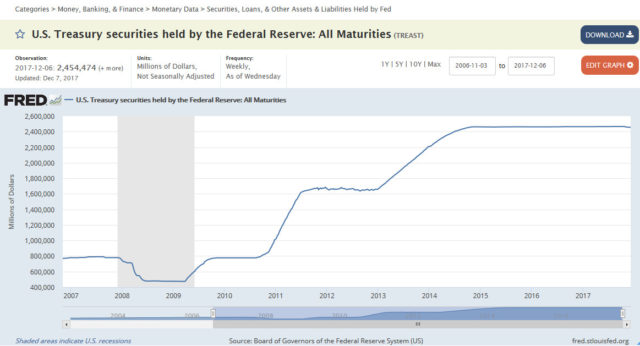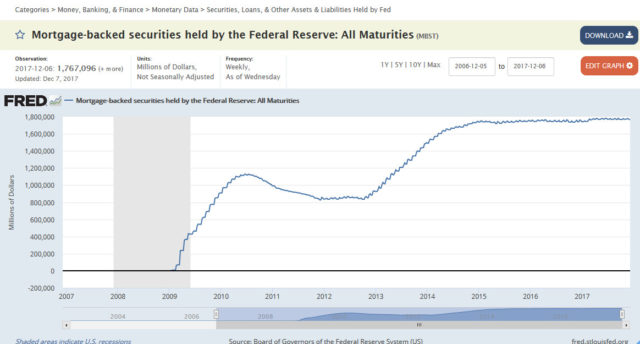I’ve been slowly assembling my year-end report. One segment of the report is my predictions for the year, which is issued at the beginning of the calendar year. They are mainly for fun and not for serious investment purposes. Some years my crystal ball is clear and in some other years it is very opaque. This year, the crystal ball was not only opaque, it had huge cracks!
For reference, the predictions were made in my 2016 Year-End Report. I will grade them as follows:
If absolutely everything works in 2017, the gains should be in the low teens. It is more probable that it will be a mid-single digit percentage year for me. My research pipeline is relatively thin at the moment (not a good sign for gains). Keeping my past 11 year record of 17% right now is a pipe dream.
Failed. Barring a catastrophe in the remaining 8 trading days of the year, the year-end percentage gain figure is going to be well north of the +17% previous 11-year CAGR.
1. The 1st half of the year will contain the high water mark for the S&P 500, Nasdaq and TSX. (The TSX’s high water mark was on the last trading day of the year!).
Failed. As I write this, December 18, 2017 is the high water market for the year for all of the indicies! (the prediction was looking good until September).
2. The Bank of Canada will not raise the short-term interest rate (0.5%), UNLESS if the 10-year bond yield rises above 2.5% (right now it is 1.72%).
Failed. The 10-year never got above 2.2% and rates rose twice to 1.0%.
3. The Canadian dollar will depreciate below 70 cents USD at some point during the year.
Failed. It got to just below 73 cents but that’s it.
4a. Kevin O’Leary becomes the next leader of the Conservative Party of Canada, first-ballot victory with around 60% of the vote.
4b. He will speak better Français better than the media expects (think about Facebook’s Zuckerberg speaking Mandarin).
Failed, and failed! Even if he stuck around, he would have received nowhere close to a majority of the vote on the first ballot.
5. The 2017 Budgetary proposals as written above (I’ll consider this prediction successful if at least 4/7 occur).
Failed. 1/7 correct.
6. Spot WTIC pricing will spend the majority of its time around the USD$50-65 price band.
Somewhat failed. The chart dipped well below 50 for a good chunk of the middle of the year. (Update: A commentor below, Live from London, said this is not the case)
7. If China experiences something akin to Japan’s early 1990-type economic malaise, there will be significant ripple-down effects on Vancouver real-estate (let’s define this as a Teranet average of less than 220).
Not graded. The conditional “if” statement never occurred.
8. The US federal reserve will raise interest rates once to 1%, but will relax the interest re-investment policy on their balance sheet assets during the year and retain a tightening bias.
Mostly failed. They raised rates three times. While they certainly altered their re-investment policies on their balance sheet items, they continue to retain a tightening bias and it is predicted there will be 3 additional rate increases in 2018.
9. “Canada Recession” will register a Google Trends search index rating of higher than 10 sometime in 2017. This is basically a prediction that by year-end that it should be fairly evident that we are close or going into recession.
Failed. The measurement parameter was ambiguous on this but it would have been in relation to the five-year chart (as it is a relative index and not an absolute index). It got up to 3.
10. Minister of Democratic Reform Maryam Monsef will get shuffled out of her portfolio (in addition to others from theirs) during 2017. There will be some “face-saving” measure applied for the justification (e.g. she suffered an injury, or something to explain it other than her performance).
Mostly correct. I think the widely recognized excuse was incompetence on the democratic reform file.
11. In the May 2017 BC election, the BC NDP win 20 seats or less (down from the 35 they currently hold). I note polling now has them neck-and-neck with the governing BC Liberals.
Failed. However, to my credit, during the campaign period I completely flipped my prediction and got it mostly correct in this post. Take this advice from a political student: campaigns matter.
12. There will be at least one volatility spike (VIX index) that will take it above 30 as a result of some geopolitical (not economic) event.
Really failed. This one was a mile away, with a peak of 17.
13. (Added January 2, 2017) Canopy Growth Corp (TSX: CGC) trades below CAD$9.14/share (2016 year-end closing price) at 2017 year-end (background info).
Really failed. Good thing I wasn’t shorting this, as it is CAD$2021/share today! Don’t know what investors are smoking when they’re buying this, but what do I know? (Update December 28, 2017: One week later, WEED is north of CAD$30!)
Summary:
Correct – 1
Failed – 13
Sometimes when you make predictions, they all turn out to be wrong. Indeed, the only correct prediction I thought was a lay-up.
Fortunately, I do not invest my capital on the basis of these predictive whims, so my yearly performance doesn’t reflect the dismal record displayed above!

